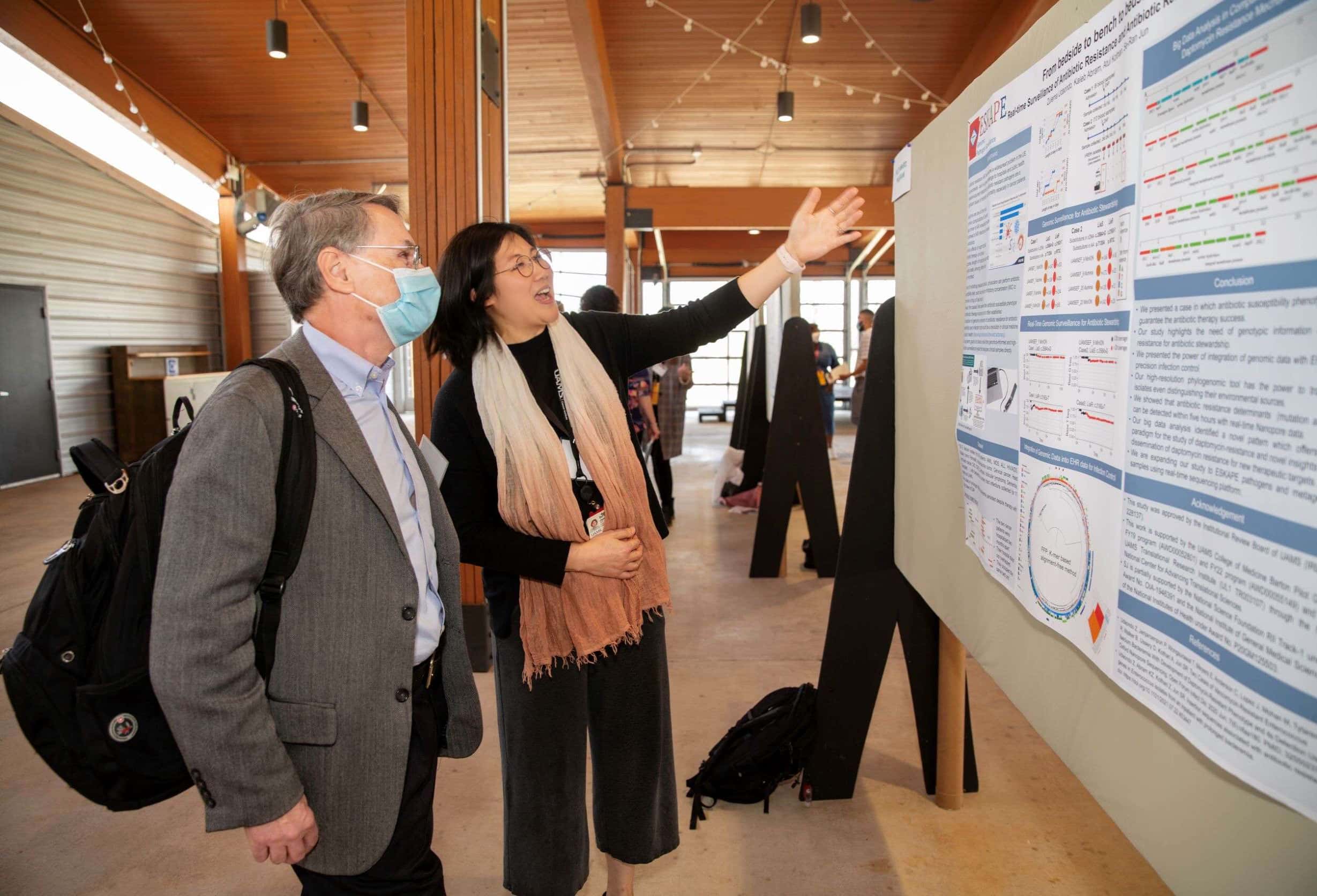NIH Funds UAMS Study Testing Rapid Genomic Surveillance for Antibiotic Resistant Infections
| A University of Arkansas for Medical Sciences (UAMS) study is developing real-time and accurate genomic methods that can be used routinely to deliver life-saving information to doctors treating antibiotic-resistant infections.
Backed by a two-year, $418,000 National Institutes of Health (NIH) National Institute of Allergy and Infectious Diseases (NIAID) grant, UAMS’ Se-Ran Jun, Ph.D., says the now-affordable real-time sequencing technology can be harnessed for everyday use in hospitals.
In addition to helping doctors optimize antibiotic therapy, genome-based information could help hospitals identify and prevent hospital-acquired infections and their transmission.
“Current genomic methods do not have fast enough turnaround time and accuracy to serve as an effective epidemiology tool,” said Jun, an assistant professor of the Department of Biomedical Informatics in the College of Medicine. “Establishing an accurate real-time genomic pathogen surveillance system for routine use would be revolutionary in clinical medicine and help make hospitals safer places.”
Jun is focusing her study on a group of six highly virulent and antibiotic-resistant bacterial pathogens: Enterococcus faecium, Staphylococcus aureus, Klebsiella pneumoniae, Acinetobacter baumannii, Pseudomonas aeruginosa and Enterobacter species. The group is known by the acronym ESKAPE.
Antibiotic resistance occurs when bacterial and fungal infections develop the ability to defeat the drugs used to kill them. According to the Centers for Disease Control and Prevention (CDC), it is a top threat to the public’s health and a priority across the globe. In the United States alone, it causes more than 2.8 million infections and 35,000 deaths per year. Immunocompromised cancer patients are especially at risk of acquiring antibiotic-resistant infections.
Jun’s research builds on data she gathered using a pilot grant from the UAMS Translational Research Institute.
“This is a great example of translational bioinformatics — leveraging the latest sequencing technology for a critical application in patient care,” said Laura James, M.D., director of the Translational Research Institute.
If she is able to confirm her hypothesis, Jun said the genomic surveillance system would accurately and swiftly identify pathogen and transmission routes. It would also measure how vulnerable microbes are to antibiotics along with clinical microbiology laboratory tests.
“I am so excited because the output we generate could be translated directly into medical practice,” she said.
Jun, a data scientist whose doctorate is in mathematics, is using her expertise of real-time sequencing, genomics, microbiomics and computer science to conduct the study.
The Translational Research Institute is funded by the NIH National Center for Advancing Translational Sciences, Clinical and Translational Science Award UL1 TR003107.

